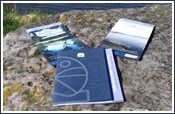The idea of the Bude Canal was first conceived in 1774, its main use being seen as a means of transporting Bude’s lime-rich sea sand inland to “sweeten” the acidic soils. It was anticipated that other cargoes such as coal, slate, timber, iron and bricks could also be carried following their import to Bude. Farm produce from the town’s hinterland was to be exported.

In addition, a more strategic idea for a cross-peninsula canal between the north and south coasts of Devon and Cornwall was mooted. An Act of Parliament gained approval in the same year, 1774, for a canal between Bude and the English Channel. However, this proved too ambitious an idea and the scheme was dropped, the Act of Parliament never being taken up.
An amended scheme based on the more modest agriculture-based proposal then gained approval through another Act of Parliament a little later, in 1819. The Bude Harbour and Canal Company was formed and began work the same year, constructing what became a system of waterways with three branches. The scheme was completed in 1825, with a total length of 57km/36 miles.
The lowest3.5km/2 miles of the Canal, between Bude and Helebridge, was built to be operable by barges. The remainder of the system was more modest in scale and built to be operated by small “tub boats”.
The three branches of the remainder of the Canal were:
- the Holsworthy branch;
- the Aqueduct branch, originally built to supply water to the system from the
specially built reservoir at Lower Tamar Lake but later also used by tub boats for
transportation;
- the Launceston branch.






